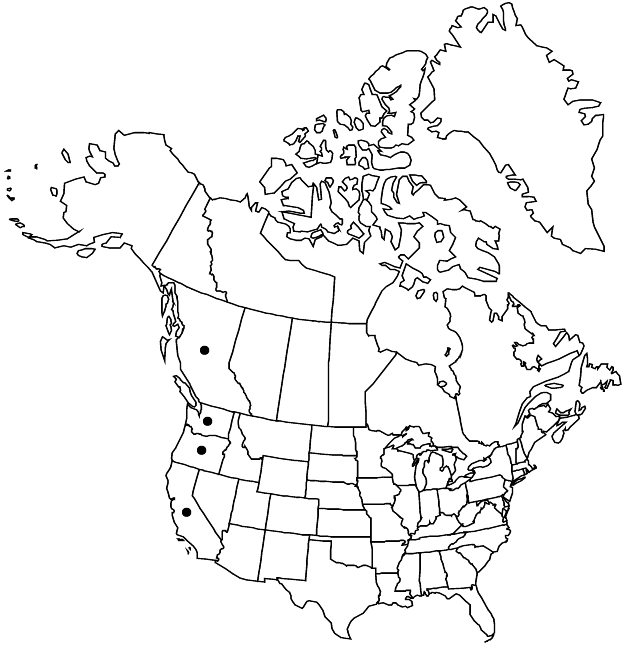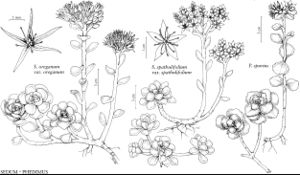Difference between revisions of "Sedum spathulifolium var. spathulifolium"
FNA>Volume Importer |
imported>Volume Importer |
||
| (One intermediate revision by the same user not shown) | |||
| Line 58: | Line 58: | ||
|publication year= | |publication year= | ||
|special status= | |special status= | ||
| − | |source xml=https:// | + | |source xml=https://bitbucket.org/aafc-mbb/fna-data-curation/src/2e0870ddd59836b60bcf96646a41e87ea5a5943a/coarse_grained_fna_xml/V8/V8_463.xml |
|genus=Sedum | |genus=Sedum | ||
|species=Sedum spathulifolium | |species=Sedum spathulifolium | ||
Latest revision as of 22:43, 5 November 2020
Primary rosettes 2.5–3.7 cm diam. Leaf blades sometimes glaucous and appearing blue-green, not pruinose, with mealy covering, 1.4–2.1 mm thick. Flowers 1.2–1.6 cm diam.
Phenology: Flowering spring–summer.
Habitat: Shaded situations and glades on cliffs and rocky slopes
Elevation: 0-1600 m
Distribution

B.C., Calif., Oreg., Wash.
Discussion
The degree of waxy or powdery secretions on the leaf surface is variable. Individuals with powdery secretions grow on sea cliffs in California, Oregon, and Washington and are here recognized as var. pruinosum. Plants lacking powdery secretions but varying in degree of waxy secretions, which occur in the Sierra Nevada, Klamath Mountains, and Transverse Ranges of California, have been recognized as distinct subspecies by some authors. Of those, subsp. yosemitense has leaves loosely arranged in rosettes and is found in the central and southern Sierra Nevada and Transverse Ranges. Subspecies purdyi has a glaucous bloom and compact rosettes and is found in the northern Sierra Nevada and Klamath Mountains of northern California and southern Oregon. It has long stolons and enlarged papillae on the leaf margins; subsp. yosemitense has fewer, shorter stolons and lacks the marginal papillae. Further biosystematic studies are needed to determine whether subspp. yosemitense and purdyi should be recognized as infraspecific taxa.
Selected References
None.
